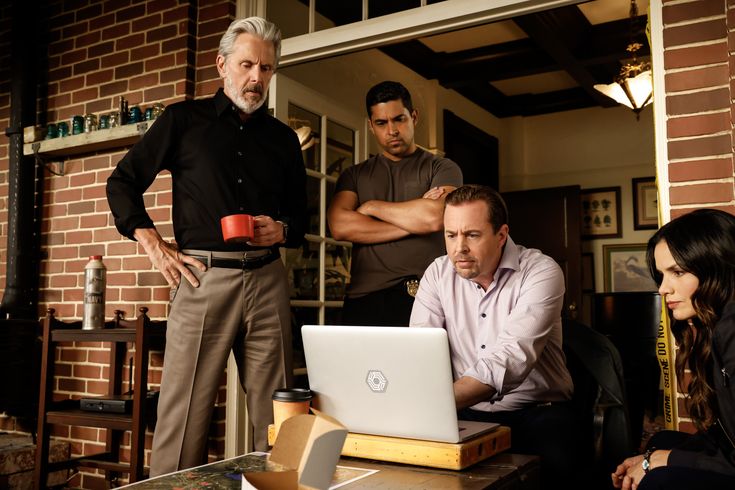
If you thought NCIS was running out of ways to surprise its fans after more than two decades, think again. Episode 4 of Season 23, titled “Gone Girls,” flips the familiar procedural formula upside down — and the result is both chaotic and captivating. Let’s dive deep into what made this episode such a rollercoaster ride and why it somehow manages to land on its feet.
A Shocking Start That Sets the Tone
From the very first scene, “Gone Girls” doesn’t waste time. The episode opens with an explosive kidnapping sequence involving two female operatives gone rogue, immediately grabbing the audience’s attention. The direction, pacing, and tension feel cinematic — almost like NCIS meets Jason Bourne.
The mood? Darker. The stakes? Higher. And for the first time this season, the emotional intensity matches the action.
The Storyline — When Loyalty and Betrayal Collide
At its core, “Gone Girls” explores themes of betrayal, loyalty, and blurred moral lines. Two agents, once considered the best, have turned their backs on the team for reasons that seem murky at first. As the plot unfolds, we discover that things aren’t as black-and-white as they appear.
This isn’t just another case-of-the-week episode. It’s a character-driven story that digs into what happens when good people make bad choices — and the ripple effects that follow.
The Emotional Weight Hits Hard
Unlike previous episodes this season, Episode 4 slows down long enough to give its emotional beats room to breathe. We see genuine conflict, moral dilemmas, and moments of vulnerability that feel earned. The dialogue isn’t just exposition; it’s personal, raw, and layered.
You can practically feel the tension simmering beneath every conversation — especially between Parker and Knight.
The Return of Classic NCIS Energy
For longtime fans, “Gone Girls” brings back that classic NCIS energy: tight investigative teamwork, sharp humor, and character chemistry that feels organic.
Even with a new generation of agents leading the charge, this episode proves the franchise still knows how to balance drama with levity. McGee’s tech wizardry, Parker’s calm under pressure, and Torres’ raw intensity blend seamlessly.
Action Sequences That Pack a Punch
This episode doesn’t hold back. From the high-speed chase through D.C. streets to a nail-biting standoff in a warehouse, “Gone Girls” delivers movie-quality action. The direction keeps viewers on edge — every camera angle and soundtrack cue amps up the suspense.
If NCIS has sometimes played it safe in the past, this episode breaks that mold.
Character Development Done Right
“Gone Girls” takes the time to peel back layers we didn’t know existed. Each character gets their moment — no one feels sidelined.
Parker’s Leadership Shines
Gary Cole continues to grow into his role as Alden Parker, balancing mentorship with quiet authority. His calm confidence is the glue holding the team together amid the chaos.
Knight Steps Into the Spotlight
Jessica Knight (Katrina Law) absolutely owns this episode. Her emotional vulnerability, mixed with her determination to uncover the truth, adds depth that’s been missing from her arc. She’s not just a skilled agent; she’s human.
Torres’ Struggle Feels Real
Nick Torres (Wilmer Valderrama) brings emotional grit to every scene. His personal demons, hinted at since last season, come bubbling back — and it’s impossible not to root for him.
Guest Stars That Elevate the Episode
One standout reason this episode works so well? Its guest cast. The two “gone girls,” portrayed by guest stars with strong on-screen chemistry, inject life into the story. Their motives aren’t cartoonish — they’re heartbreakingly believable.
You might not agree with what they do, but you get why they did it.
The Writing — Bold, Risky, and Rewarding
The writing team deserves major credit. “Gone Girls” takes risks with pacing, tone, and narrative structure. There are flashbacks, moral gray areas, and even a few narrative twists that longtime viewers won’t see coming.
It’s NCIS reimagined — still procedural, but layered like a psychological thriller.
The Dialogue Feels Human Again
The banter is back. The team’s exchanges are sharp, witty, and heartfelt — reminiscent of the show’s golden years. This kind of writing reminds us why NCIS has lasted over 20 years: it’s about people first, cases second.
The Ending — Chaos That Makes Sense
Without spoiling too much, the final act of “Gone Girls” goes off the rails — and that’s the point. The chaos mirrors the emotional unraveling of the characters. When the dust settles, the resolution feels earned, not convenient.
It’s messy, unpredictable, and oddly satisfying — the kind of ending fans will debate for weeks.
Direction and Cinematography — A Step Above
Credit goes to the director for making Episode 4 visually stunning. The lighting choices emphasize tension, while the camera work brings viewers right into the action. It’s clear the production team pushed the boundaries this time.
Even simple dialogue scenes feel cinematic, which helps elevate the entire episode.
Fan Reactions — Love, Shock, and Everything in Between
As soon as “Gone Girls” aired, social media lit up. Some fans called it “one of the boldest NCIS episodes ever,” while others were divided about the risky narrative direction. Either way, it’s all anyone can talk about — and that’s a win.
When an episode sparks this much debate, it’s doing something right.
Themes That Hit Home
Beyond the action, “Gone Girls” explores themes that resonate:
-
Trust vs. betrayal
-
The cost of loyalty
-
The moral gray areas of justice
It’s not just about solving crimes — it’s about understanding the people behind them. That emotional core keeps NCIS relevant even after all these years.
Comparing to Previous Seasons
If Season 22 was about transition, Season 23 feels like evolution. The writing is sharper, the characters more complex, and the storytelling bolder. “Gone Girls” stands as proof that NCIS still knows how to reinvent itself without losing its identity.

Why “Gone Girls” Might Be the Turning Point
This episode could mark a major shift for Season 23. The aftermath of what happens here will likely ripple through the next few episodes, setting up bigger story arcs — especially for Knight and Torres.
The choices made in “Gone Girls” will have consequences, and fans can feel the storm brewing.
Final Verdict — A Wild Ride Worth Taking
“Gone Girls” is messy, emotional, and unpredictable — but that’s what makes it unforgettable. It proves that NCIS can still take creative risks and pull them off. Even when it goes off the rails, it sticks the landing with heart and purpose.
If this is the new direction for NCIS, fans should buckle up. The ride’s just getting started.
Conclusion
“Gone Girls” isn’t perfect — but it doesn’t need to be. It’s ambitious, raw, and emotionally charged, offering a fresh spin on a long-running series. After two decades, NCIS shows it can still surprise us. Whether you loved or hated the chaos, one thing’s for sure: you won’t forget it anytime soon.
